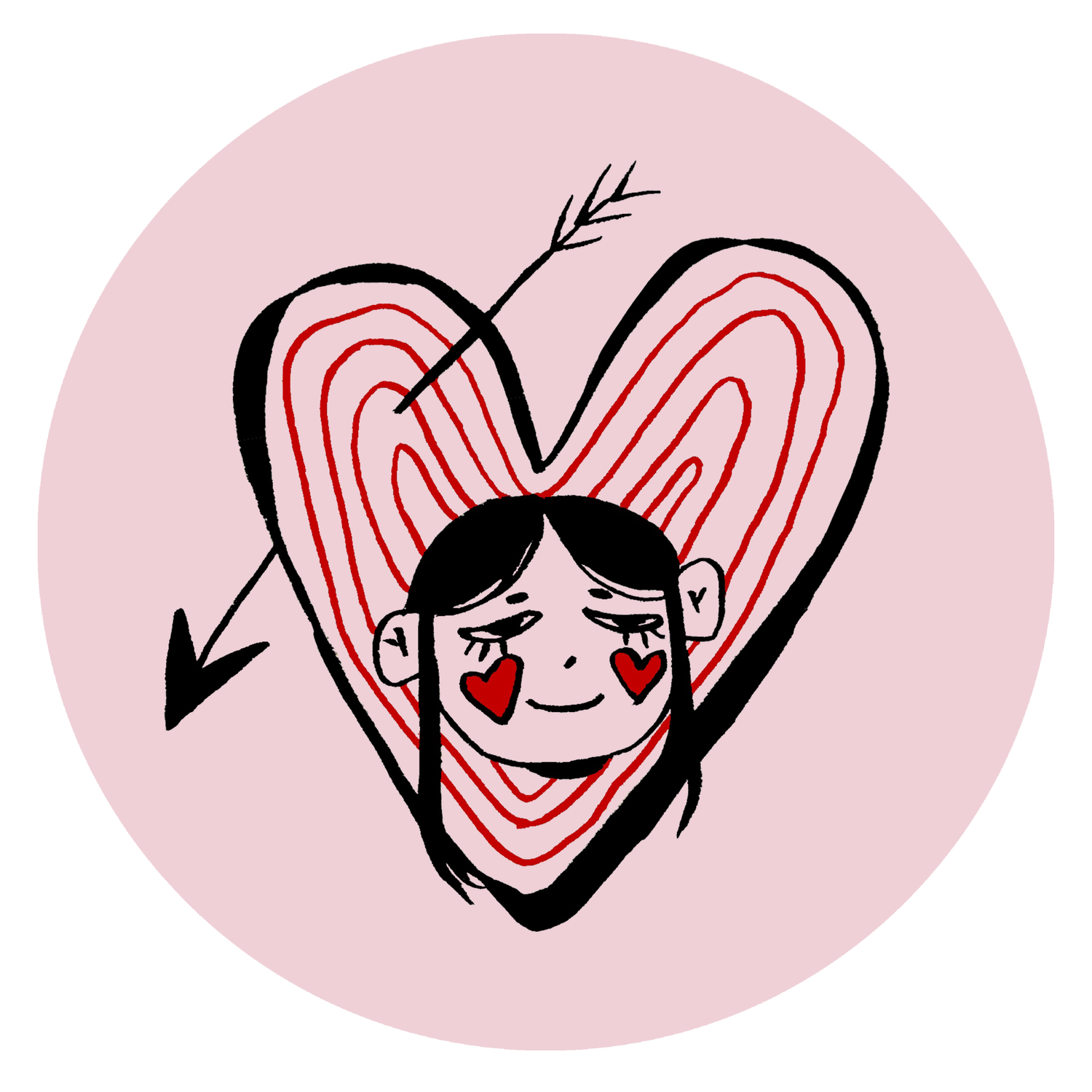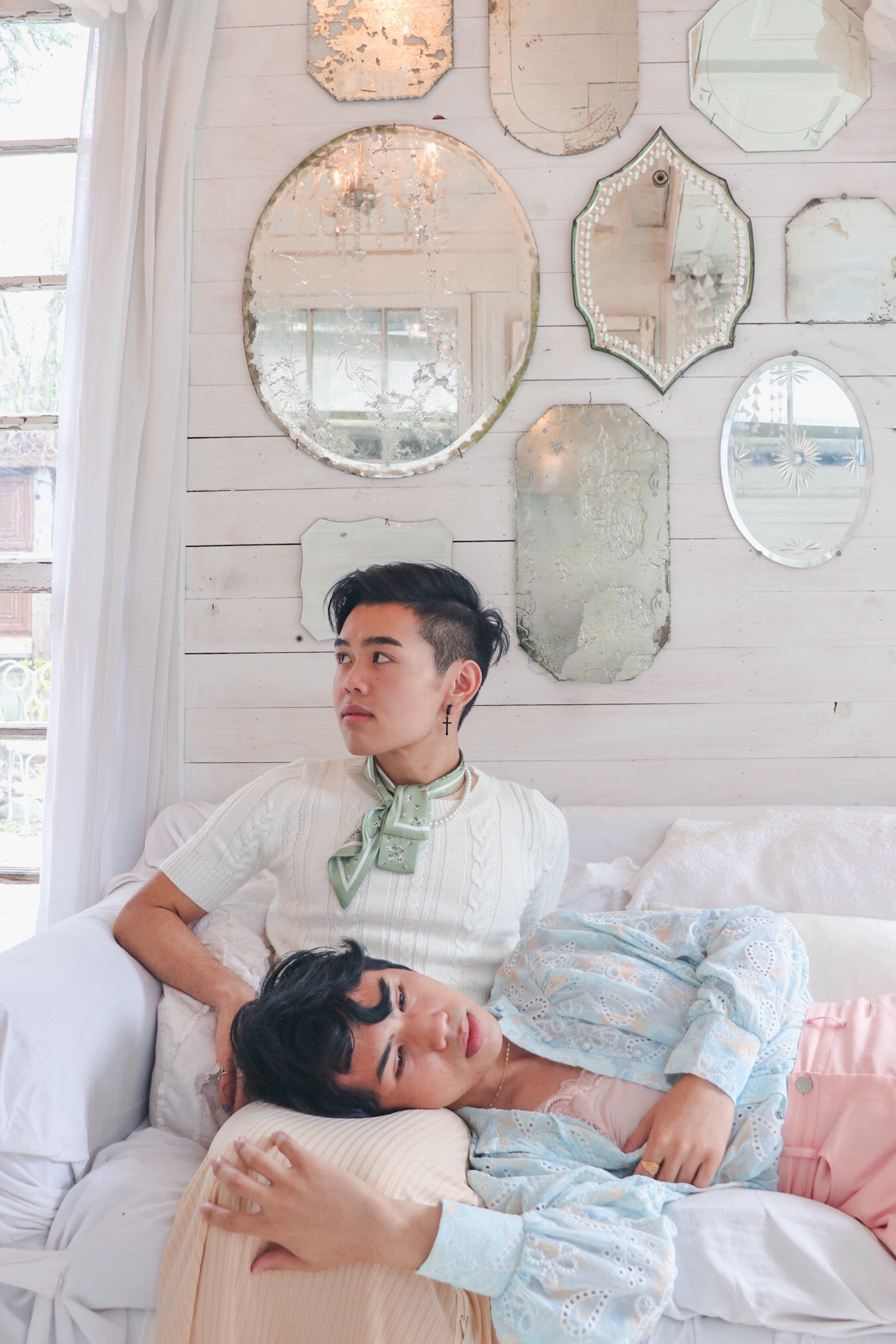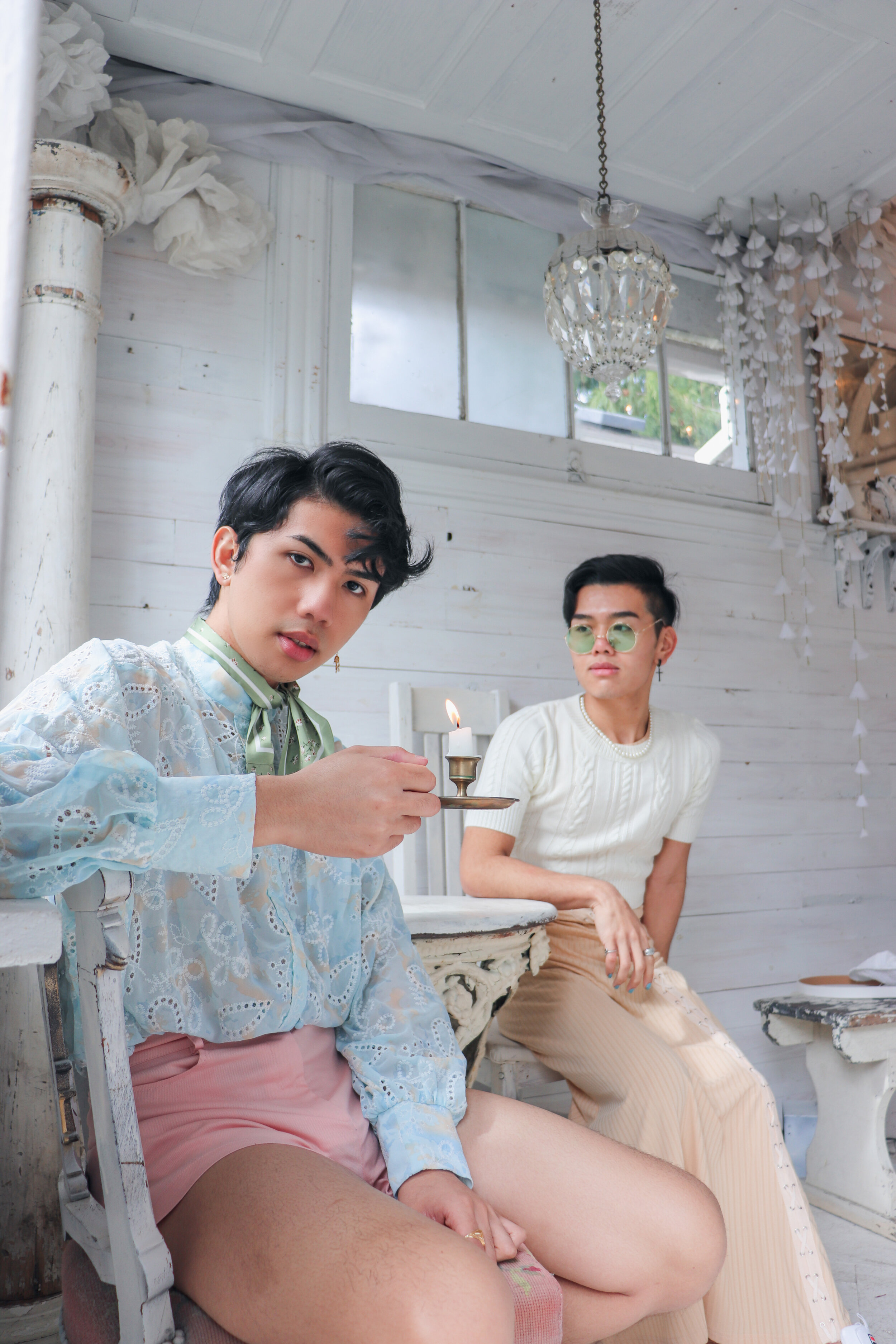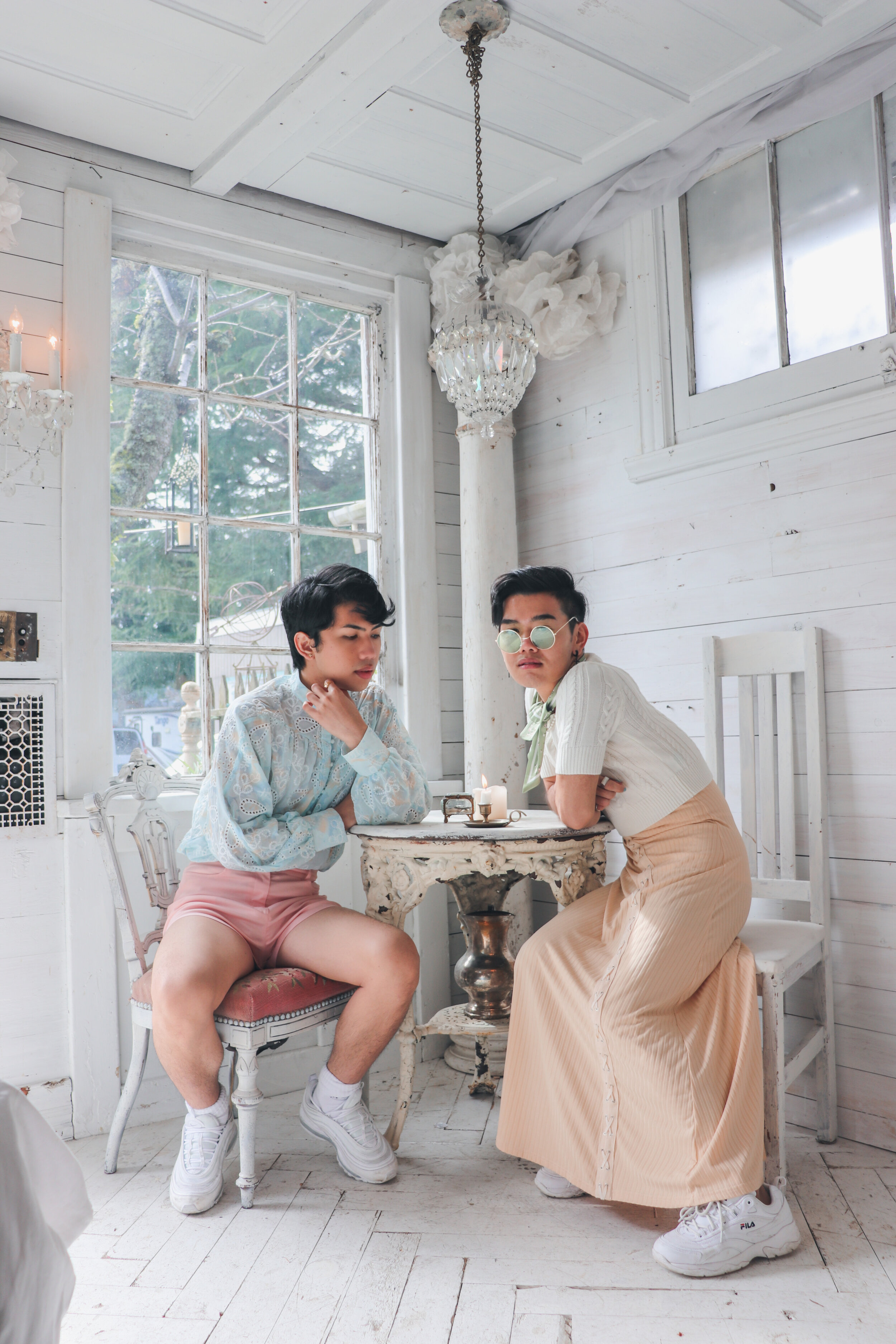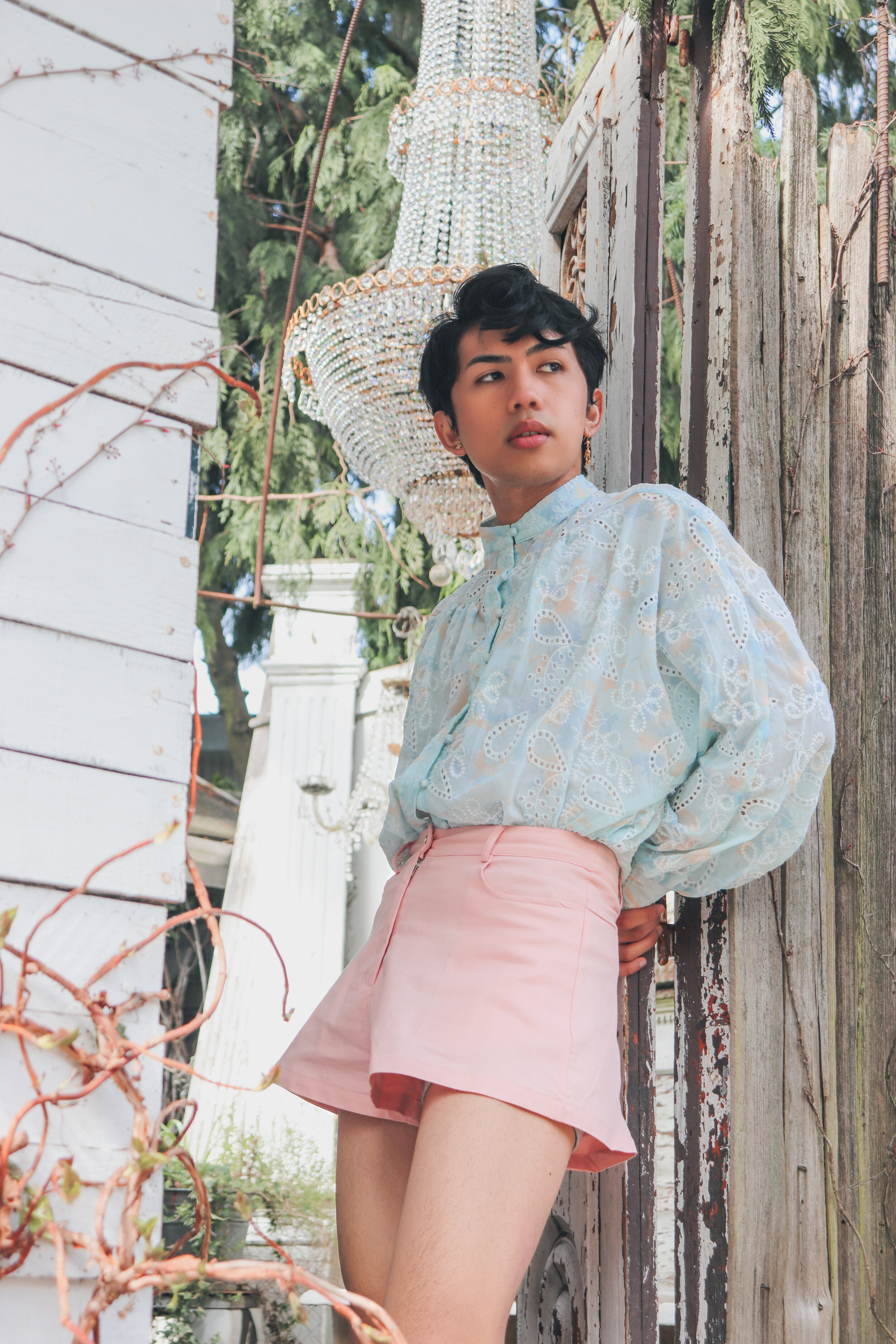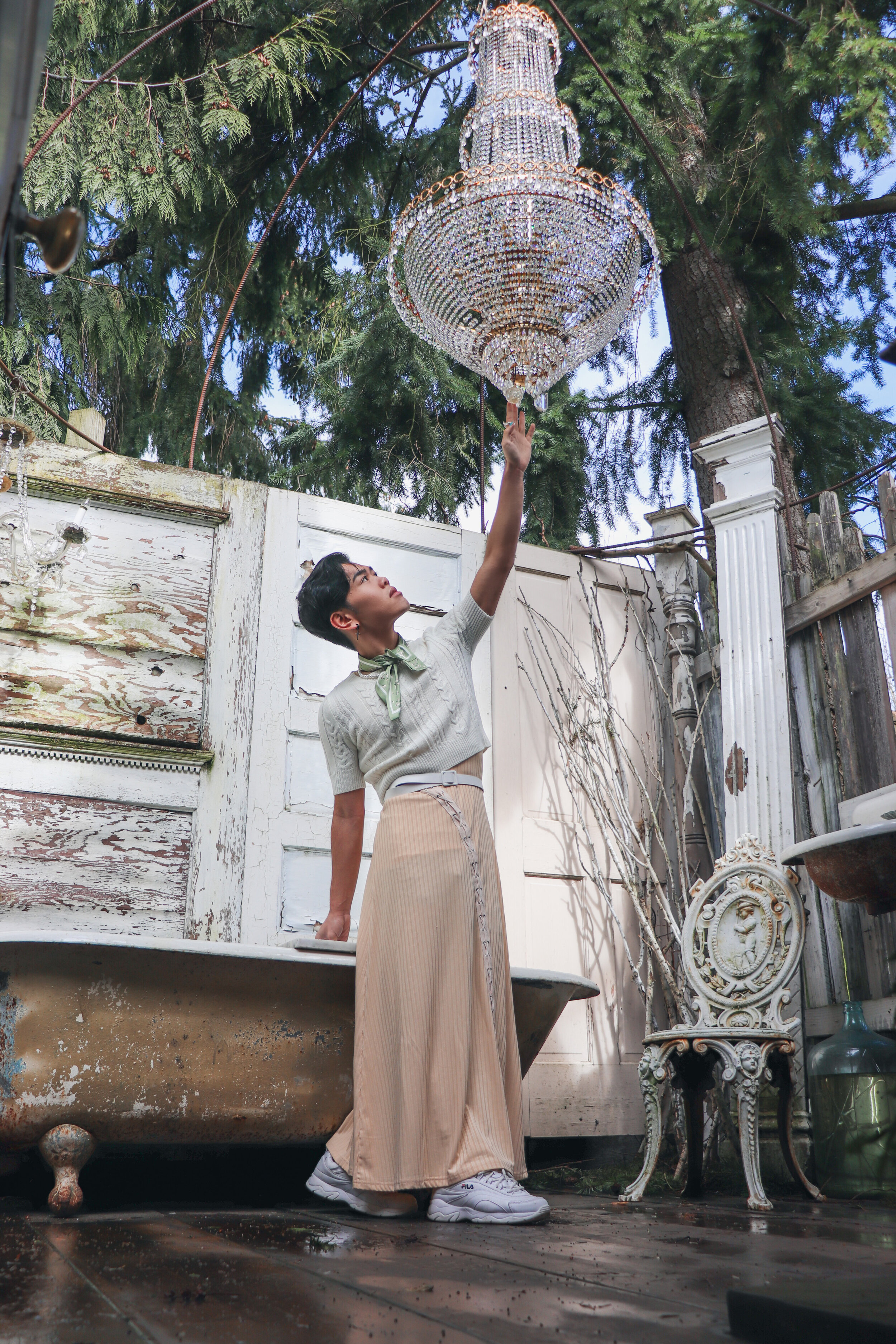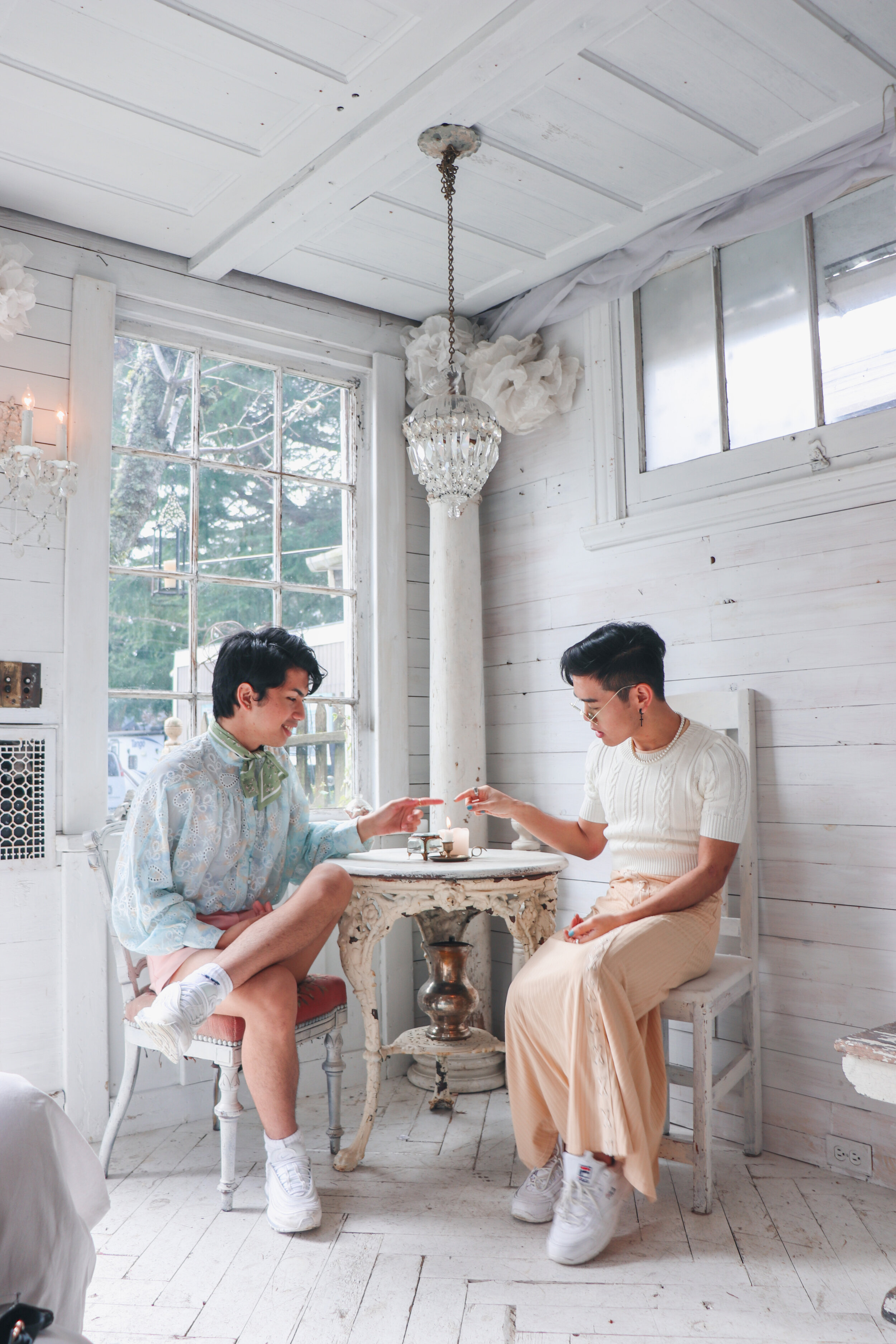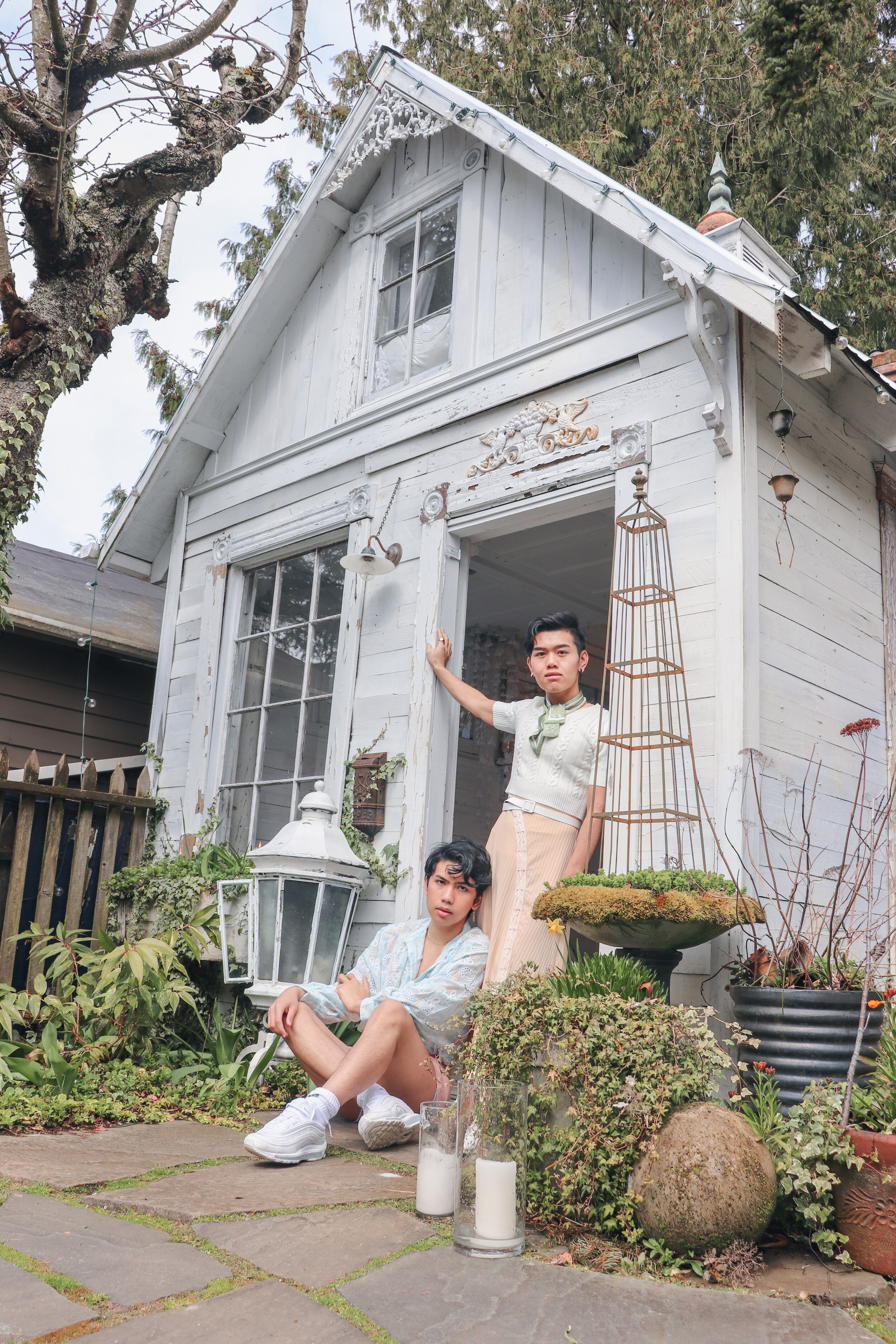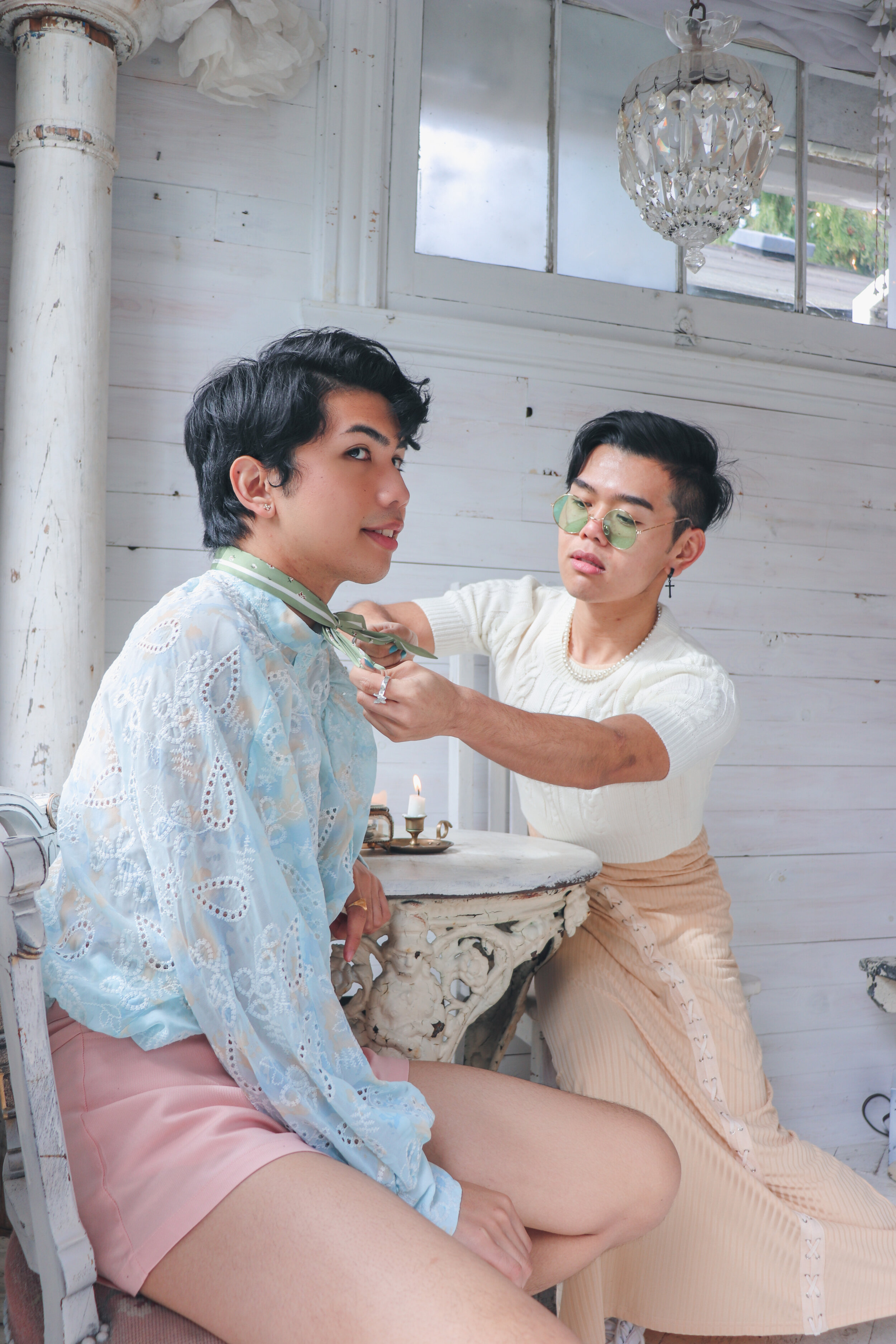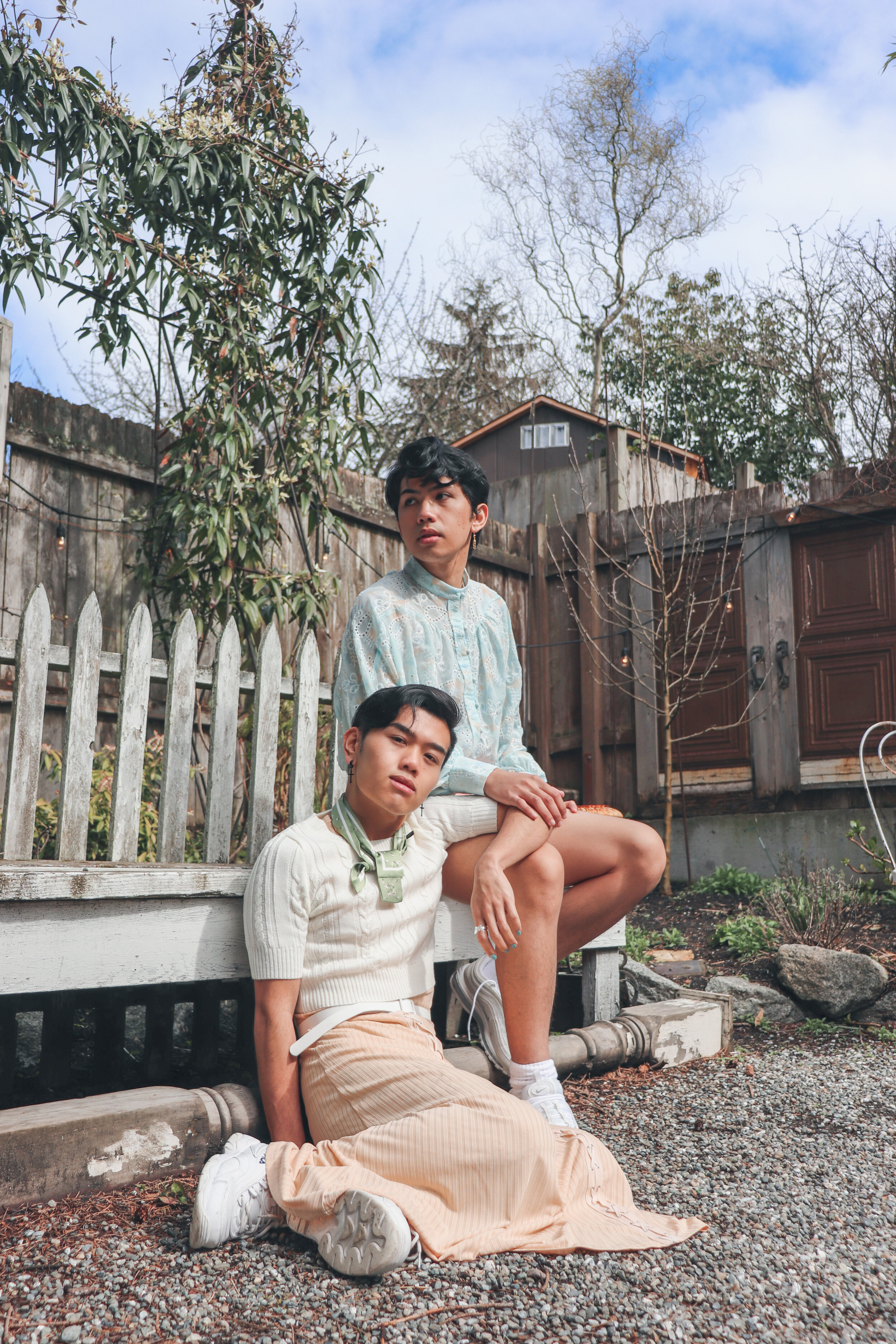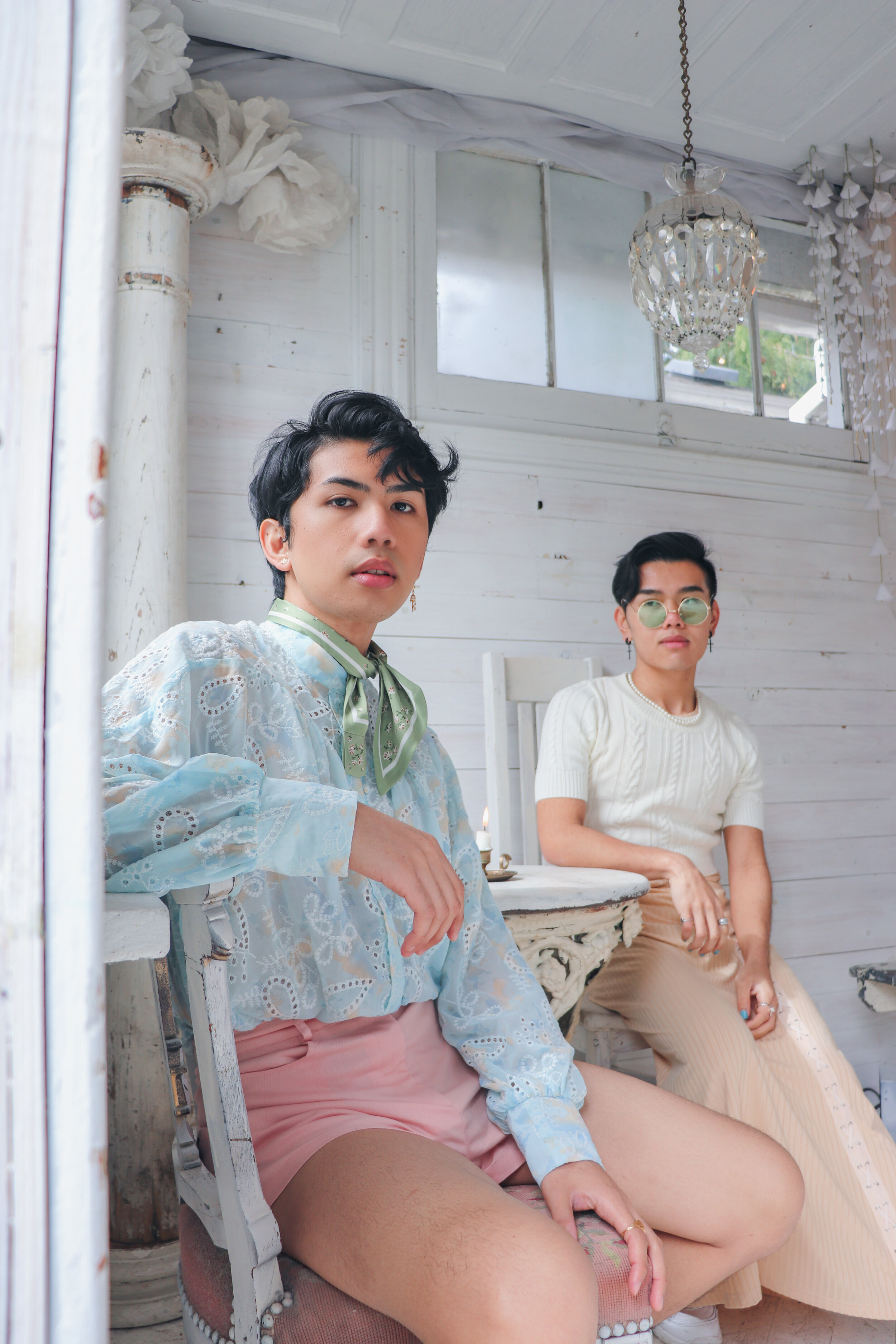feminine nostalgia
By Storm Nguyen
"Feminine Nostalgia" serves as both a modern take on 1920s American fashion and aesthetic and a portrayal of the progression of Queer Gender/Sexual expression and romance. As we enter the 2020s decade, much of the world has continued to been stifled by chaos; but entering this new age, LGBTQIA+ visibility continues to become more prominent in society. "Feminine Nostalgia" asks you to critically analyze the social standard during the 1920s. Many LGBTQIA+ individuals lived in secret, especially LGBTQIA+ people of color. As a result, not many photographs, articles or historical evidence was documented of the community during this time period but what if there was? What would have their lives looked like?
The piece captures a love story between two queer feminine-aligning male identities during our present day. Another way to put it would be this: imagine a Queer feminine couple, at a hidden speakeasy, adorned in the finest womenswear from the 1920s then randomly stumbled upon a time machine where they were transported 100 years into the future. The couple discovers that the universe has been making strides towards visibility of their community; they see that they can comfortably embrace each other's affection without having to hide, and enjoy the rest of their days freely loving each other. While simultaneously breaking down the stigma around femininity that continues to remain relevant in Queer male communities, "Feminine Nostalgia' also celebrates Femme Male identities and romance (something that is often neglected). Toxic Masculinity still continues to create division and gender roles in homosexual relationships then many are willing to admit. Such relationships don’t need to conform to a heteronormative formula yet the normalization of a "dominant" and 'submissive" in gay relationships uphold these roles.
For this reason, "Feminine Nostalgia" also represents the future of queer visibility. It’s a piece of work that attempts to dismantle the normalization of heteronormative gender/sexuality, specifically within the Asian diaspora and cultures. Prior to colonization and westernization, various Asian cultures had slightly more open-minded definitions of sexuality, orientation and gender. However, a lot of that has been erased from our history. Increasing visibility of Queer Asian media is a small step towards restoring what was lost or never recorded.
Styling: Luci Abrams. Models: Jordan Vu and Raphael Liwanag.
